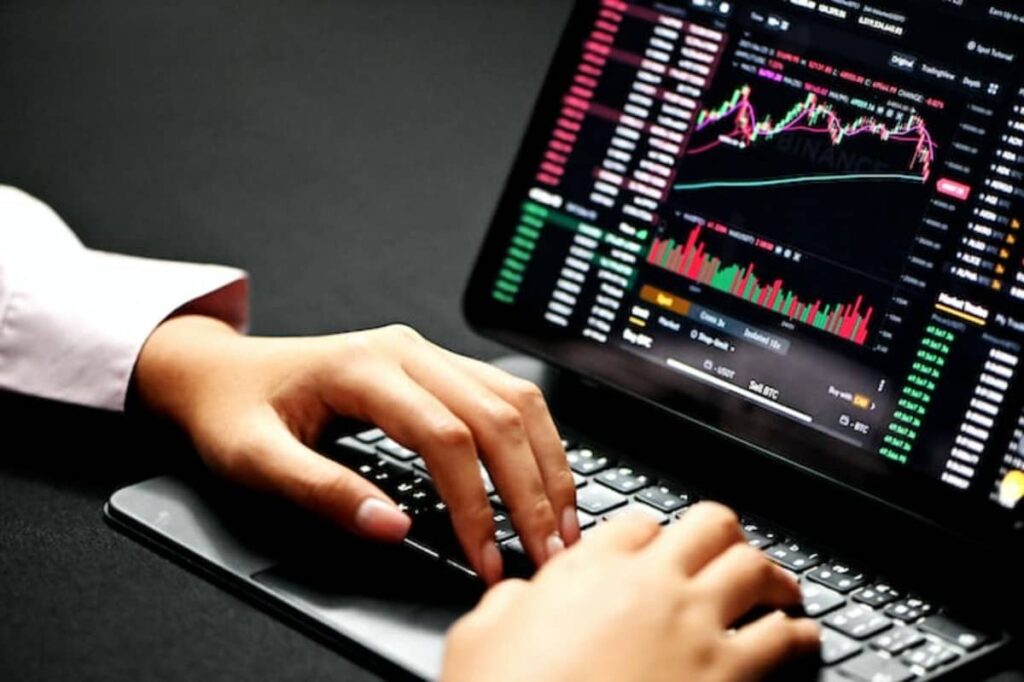Forex, short for foreign exchange, is the largest and most liquid market in the world. It trades an average of 6.6 trillion dollars per day.
As a trader, you will never have a problem getting your order filled in the forex market due to its global nature.
What is Forex Trading?
Forex is a global marketplace for exchanging national currencies. As traders, we trade based on currency pairs, which are the exchange rates between two countries. These exchange rates fluctuate based on the strengths and weaknesses of an economy, along with other factors. To predict these fluctuations and make profitable trades, we use information from technical and fundamental analysis, as well as news events.
Understanding Currency Pairs
A currency pair consists of two separate currencies. The first currency is the base currency, and the second currency is the quote currency. The exchange rate between the two currencies determines the value of the pair. For example, the AUD/USD currency pair represents the exchange rate between the Australian dollar and the United States dollar. The base currency is always equal to one, and the quote currency represents the value of one unit of the base currency.
Choosing a Forex Broker
A forex broker acts as a middleman between traders and the forex market. It is important to choose a regulated broker that operates in a country you are familiar with to avoid the risk of losing your funds. Additionally, look for a broker with competitive spreads, as spreads are how brokers make money. Personal preference also plays a role in choosing a broker that caters to your individual needs.
Selecting a Trading Platform
A trading platform is essential for executing trades. While some brokers provide their own trading platforms, they may not always be the best option. Tradingview.com is an online trading platform that offers a wide range of tools and indicators for smooth trading. It allows you to connect your broker to the platform, eliminating the need to switch between multiple platforms.
Understanding Pips
A pip is a unit of measurement used to quantify the movement in the forex market. It stands for “percentage in points” and represents the fourth decimal place in most currency pairs. For example, if the EUR/USD currency pair moves from 1.0709 to 1.0708, it has moved down by one pip. The value of each pip depends on the position size and can vary for different currency pairs.
Calculating Position Size
The position size calculator is a useful tool for determining the appropriate position size based on your risk tolerance and stop loss. By inputting the currency pair, account size, risk percentage, and stop loss in pips, the calculator provides the exact position size needed to achieve your desired risk level. This helps in managing your trades effectively.
Setting Stop Losses
A stop loss is a predetermined price level at which you exit a trade to limit potential losses. It is crucial to set stop losses correctly based on your analysis and risk management plan. Placing a stop loss below or above key support or resistance levels helps protect your capital and prevent emotional decision-making.
Understanding Leverage
Leverage allows traders to control larger positions with a smaller amount of capital. It is important to use leverage wisely and understand its implications. Leverage is often expressed as a ratio, such as 10:1, indicating the maximum position size you can hold relative to your account balance. While leverage can amplify profits, it can also lead to significant losses if not managed properly.
Mastering Trading Skills
To become a successful trader, you need to master three essential skills: a profitable trading strategy, effective risk management, and a strong trading mindset. Developing a strategy that consistently generates profits over time is crucial. Implementing proper risk management techniques, such as position sizing and stop losses, helps protect your capital. Lastly, maintaining a disciplined and focused mindset is essential for long-term success in trading.
Conclusion
Forex trading requires a solid understanding of currency pairs, risk management, and trading psychology. By utilizing the tools and knowledge discussed in this blog, you can navigate the forex market with confidence and increase your chances of success as a trader.


